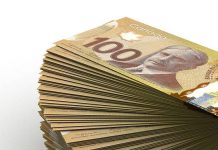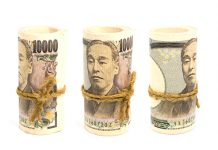Markets
Yesterday’s above-consensus US CPI numbers highlight the bumpy nature of the disinflationary process. It was reason enough for the likes of Barkin (Richmond Fed) and Mester (Cleveland Fed) to stay cautious. Both want more evidence with the latter stating that March is probably too soon for a rate cut. Goolsbee (Chicago) bluntly stated that the market was getting ahead of itself. The market reaction itself was muted with a kneejerk move higher in US yields quickly running into resistance. Failing to take out this week’s highs, a technical countermove occurred. Safe haven flows on rumours that the UK together with the US was about to carry out retaliatory missile strikes on Houthi targets extended the downleg. Net daily losses amounted to -3.2 (30-y) to -11.3 bps (2-y). German rate changes varied between -2.3 bps (2-y) and +0.8 bps (30-y). ECB’s Lagarde in an after-market speech said they are winning the inflation battle but joined her US colleagues in wanting confirmation from the data before switching the mindset to rate cuts. The Japanese yen erased previous losses on rising tensions in the Middle East. USD/JPY finished at 145.29 compared to an intraday high of 146.4. EUR/JPY’s adventure above 160 ended soon. EUR/USD experienced some CPI-induced volatility but in the end closed unchanged around 1.097. European stock markets fainted going into the close while Wall Street recovered from a weak open.
Oil prices gap higher this morning in response to the airstrikes. Brent is trading around $79.2/b. Equity markets trade mixed with Japan again outperforming. Stocks in China and South Korea lag. Taiwan is holding its nerves ahead of what are considered pivotal presidential elections this Saturday. The ruling Democratic Progressive Party wants to maintain the status quo vis-à-vis China and strengthen ties with western allies. Opposition candidates however seek to smoothen relations with the Chinese. European equities seem less bothered with geopolitics with futures pointing at a solid open. The dollar is a tad softer in uninspired trading. The economic calendar hasn’t much to offer to change that, unfortunately. Financial companies kick off the Q4 earnings season. US PPI’s are worth mentioning but matter only from an intraday perspective. From a technical point of view, EUR/USD 1.10 looks more prone for a test to the upside than 1.0875 to the downside. Yesterday’s setback has pushed the US 2-y yield back to the December lows of around 4.22%. This level has to hold for the technical picture not to weaken. The 10-y tenor continues to struggle around 4%.
News & Views
Bloomberg reports that Bank of Japan officials are likely to discuss cutting their growth and inflation forecasts when they meet next on January 23. A drop in oil prices could trigger a downward revision of CPI ex fresh food for fiscal year 2024 (starting in April) from 2.8% to 2.5%. In fiscal year 2025, the BoJ will continue to expect inflation below the 2% target. Officials are also likely to discuss a sharper cut in the growth forecast for this fiscal year after weaker-than-expected GDP figures in the third quarter, the sources said. The article strengthens market believe that the BoJ will continue pushing forward its real policy U-turn. Since the start of the year, this triggered new JPY weakness in combination with the rebound in core bond yields. EUR/JPY yesterday tested 62% retracement on the Nov/Dec correction lower at 160.07. USD/JPY made an attempt at 50% retracement on the same correction (146.08). Some safe haven flows related to the above mentioned US/UK strikes prevented a break higher, at least for now.
Chinese exports rose by 2.3% Y/Y in dollar terms in December, helped by favorable comparisons with a year ago when Covid ran through the country. Imports increased by 0.2% M/M, especially thanks to improved ties with Australia (25% increase). For the full-year 2023, Chinese exports dropped by 4.6% compared to record year 2022 marking a first decline since 2016. Full-year imports fell by 5.5% resulting in an $823bn trade surplus for 2023. Chinese inflation data were reported separately. CPI rose for the first time in three months, by 0.1% M/M, but the Y/Y-figure remains mired in negative territory (-0.3%). For 2023 as a whole, CPI inflation averaged only 0.2%. Core CPI held steady at 0.6% Y/Y in December. Factory-gate inflation (PPI) was negative for a fifteenth month running (-2.7% Y/Y), falling by 3% over 2023.












